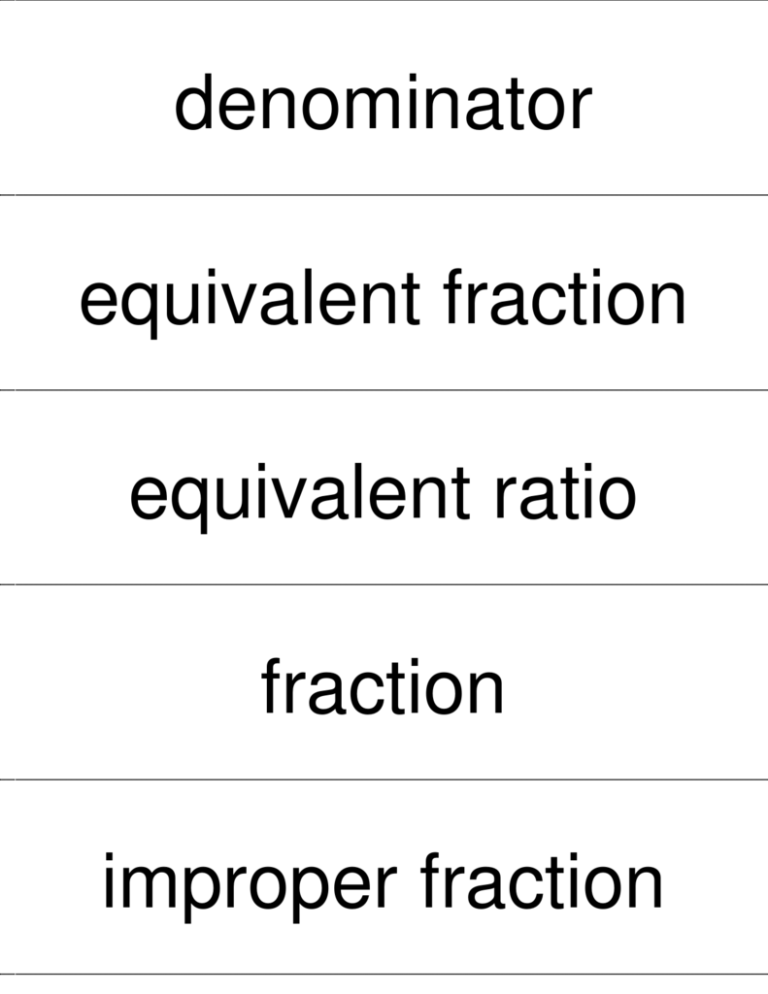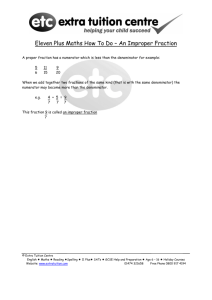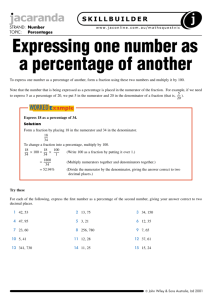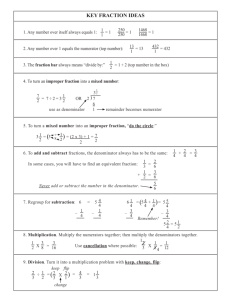denominator equivalent fraction equivalent ratio fraction improper
advertisement

denominator equivalent fraction equivalent ratio fraction improper fraction inequality sign mixed number numerator percent proper fraction ratio unit rate The number below the bar in a fraction symbol that represents the number of parts in the whole or set. Fractions that represent the same part of a whole or the same part of a set. Two or more ratios that represent the same comparison. (e.g., 1 : 3 = 2 : 6) Numbers used to name part of a whole or part of a set. A fraction in which the numerator is greater than the denominator; therefore, fraction is greater than one whole. The symbols > or < that are used to make comparisons. (e.g., 8 > 5 is read as “Eight is greater than five.” and 5 < 8 is read as “Five is less than eight.”) A number made up of a whole number and a fraction. The number above the bar in a fraction symbol. A part-to-whole ratio that compares a number or an amount to 100. e.g. 25% = 25 : 100 = 25 100 A fraction in which the denominator is greater than the numerator. A comparison of two numbers or quantities measured in the same units. (e.g., If you mix juice using 1 can of concentrate and 3 cans of water, the ratio of concentrate to water is 1 : 3, or 1 to 3.) A comparison of two quantities where the second one is described as 1 unit. For example, a unit rate might be 30 km in 1 h or 4 tomatoes for $1.






